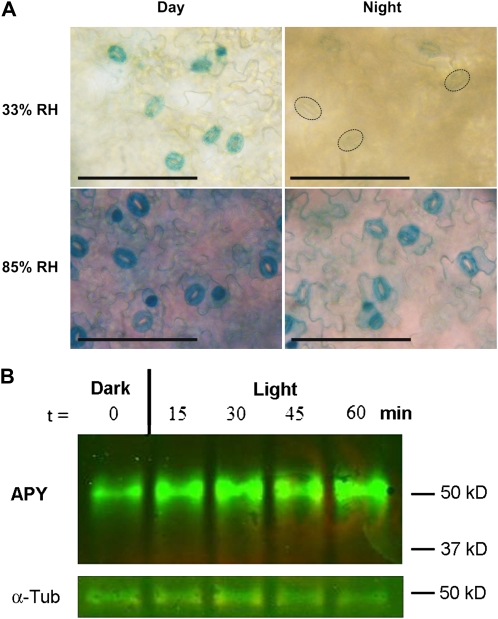Figure 2.
Open stomata have more active APY1/2 promoters, and light-treated guard cell protoplasts have higher APY1/2 protein levels. A, APY1:GUS and APY2:GUS plants were grown in low-humidity (33% RH) and high-humidity (85% RH) conditions. Leaves were harvested after 7 h of light (Day) and after 4 h in the dark (Night) and stained for GUS activity. Bright-field images of the abaxial epidermis of whole mount leaves from the APY2:GUS line 3-2-11 are shown representing the staining pattern of all four GUS lines analyzed. Dashed lines mark the outlines of some weakly stained guard cells in the top right panel. Bars = 100 μm. B, Western-blot analysis of APY1/APY2 protein levels in dark-adapted guard cell protoplasts after treatment with light at various time points. Treatment with light for 15 min results in an increase in immunodetectable APY1/APY2 protein levels. This result is representative of three biological repeats. α-Tub, α-Tubulin.

